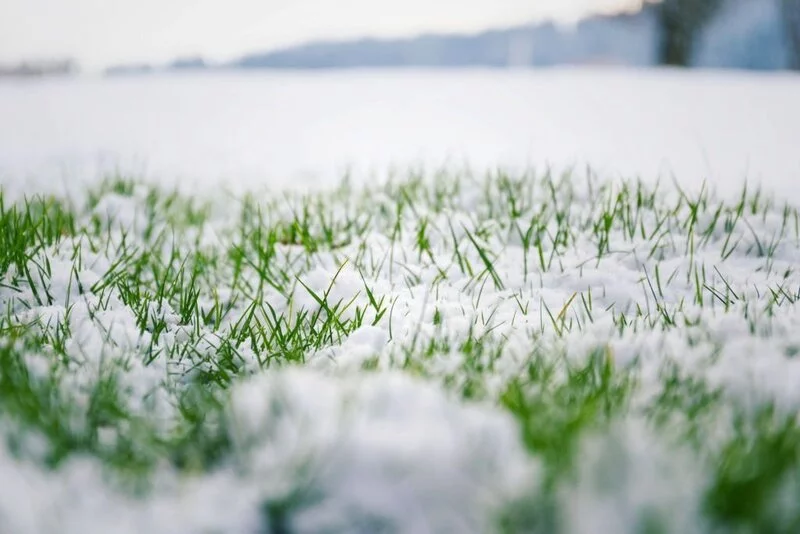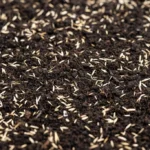Have you ever looked out your window on a cold winter day and wondered what happens to your lawn under the thick blanket of snow? Does it die off only to magically reappear when spring rolls around? That’s a question many people ask as they see their once vibrant and green lawn turn into a seemingly lifeless brown field. In this article, we’ll delve into the life cycle of grass and how it survives the harsh winter season.
- Repairs bare spots in two weeks or less.
- Everything you need to grow lush, thick grass is pre-mixed and ready to use
- Combination of premium Smart Seed grass seed, professional-grade fertilizer, and mulch.
- Covers up to 75 sq. ft. with 7-14 day seed germination
Life Cycle of Grass
Grass is a remarkable plant. Like any living thing, it has a life cycle that involves stages of growth, reproduction, and rest. When the weather is warm, grass spends its energy growing and reproducing, covering your lawn with a beautiful green carpet. But when temperatures drop, something interesting happens.
Instead of dying off, grass goes into a kind of hibernation. This state, called dormancy, is a survival strategy grass uses to withstand extreme weather conditions, like the cold of winter. So, while it might look like your grass has given up the ghost when the snow flies, it’s actually just sleeping, conserving energy until the warm days return. Next, we’ll explore how different types of grasses react to winter and what dormancy means for your lawn.
The Impact of Winter on Different Types of Grass
Not all grass is the same, you know. In fact, there are many different types of grass, and each reacts to winter in its own way. For instance, cool-season grasses like fescue, ryegrass, and bluegrass actually thrive in cooler temperatures and can stay green throughout the winter, provided the conditions aren’t too harsh.
On the other hand, warm-season grasses like Bermuda and zoysia really don’t like the cold. They turn brown and go dormant in the winter. But don’t worry, they’re not dead. They’re just taking a long nap, waiting for the warmer weather of spring to come back.
The Process of Grass Dormancy in Winter
So, what’s happening to your grass when it’s dormant? Think of dormancy as a deep sleep. When the weather gets cold, grass slows down its growth and focuses on storing energy in its roots. The top part of the grass might turn brown, but the roots are still alive and kicking.
This is a natural process that helps the grass survive the winter. By “sleeping” through the cold months, the grass conserves energy and protects itself from the cold. It’s a clever survival tactic, and it’s why your lawn springs back to life when the weather warms up.
In the next sections, we’ll explore how to care for your lawn in winter and how to help it recover when spring arrives. Stick around, the best is yet to come!
How to Care for Your Grass During Winter
Winter is coming! And while your grass might be getting ready to sleep, there’s still some work for you to do.
First, try to keep off the lawn as much as possible. Walking on dormant grass can cause damage and make it harder for the lawn to recover in spring.
Next, consider applying a winter fertilizer to your lawn. This will feed your grass’s roots and help them stay strong through the cold months. But remember, always follow the instructions on the package!
Finally, keep your lawn clear of leaves and debris. These can block light and trap moisture, creating the perfect conditions for mold and diseases.
- Scotts Turf Builder Lawn Food feeds and strengthens grass to help protect against future problems
- Fertilizer builds strong, deep roots and improves the lawn’s ability to absorb water and nutrients (vs. unfed lawn)
- Apply lawn care product to a wet or dry lawn
- Grass fertilizer works on any grass type
- One 12.5 lb. bag of Scotts Turf Builder Lawn Food covers 5,000 sq. ft.
Preparing Your Lawn for Spring: Post-Winter Care
When winter is over and your grass wakes up from its long nap, it will be ready for a bit of TLC. This is your chance to set your lawn up for a successful growing season.
First, give your lawn a good raking. This will remove any leftover leaves and debris and will help to aerate the soil, making it easier for water and nutrients to reach your grass’s roots.
Next, consider applying a spring fertilizer to give your grass a nutrient boost. Look for a fertilizer that’s high in nitrogen to promote healthy leaf growth.
Finally, as the weather warms up, start to water your lawn regularly. Grass needs about an inch of water a week to stay healthy, so keep an eye on the weather and adjust your watering schedule as needed.
And there you have it! With these simple tips, your grass should bounce back from winter dormancy and be ready to grow lush and green. Just remember, every lawn is different and it’s all about finding what works best for you and your grass.
Frequently Asked Questions About Grass and Winter
Does all grass go dormant in winter?
Not all types of grass go dormant during winter. Cool-season grasses like fescue and Kentucky bluegrass stay green and continue to grow in cooler temperatures, while warm-season grasses like Bermuda and Zoysia go dormant and turn brown.
How can I protect my grass in winter?
You can protect your grass during winter by minimizing foot traffic, keeping your lawn clear of debris, and using a winter fertilizer. It’s also crucial to mow your lawn to the right height before winter arrives; not too short, not too long.
How soon can I start mowing my lawn in the spring?
As soon as your grass starts growing in the spring, you can begin mowing. Just be sure not to cut the grass too short at first to avoid stressing it.
Conclusion
The winter season doesn’t necessarily spell doom for your grass. While it’s true that some grasses go dormant and turn brown, this is a natural process that helps them survive the cold. With proper care before, during, and after winter, you can ensure that your lawn remains healthy and is ready to spring back into action once the temperatures start to rise. Remember, the secret to a lush, green lawn lies in year-round care and patience!






